Michael Peterson
Software Architect
SpinSys
Today’s business leaders employ business intelligence (BI) platforms to guide strategic decision-making and improve daily operational performance. Companies of all sizes and types use these enterprise technological tools to gain competitive advantages through robust gathering, analysis and visualization. However, there are times they do not fully meet the needs and requirements of an organization’s entire user/customer base. Augmenting your business intelligence platform with various JavaScript libraries can help fill many of these gaps.
Benefits of BI Analytics Platforms
The vendors of the most popular BI enterprise platforms such as Tableau and QlikView continue to improve their offerings that include sophisticated data mining and modeling functions as well as stunning, interactive charts and graphics. Users of these BI platforms can quickly conduct statistical modeling of large quantities of records and create visualizations that intuitively speak to a wide range of people.
Ease of use is the main selling points of most of these proprietary BI solutions. Those that can do this without requiring administrators or BI developers or to taking excessive amounts of extra training often represent best-value resources for organizations. The visuals, which even non-technical business users are able to produce within these platforms, feature information that stakeholders can view at high levels or drill down to discover finer details.
BI Analytics Platform Limitations
Enterprise BI platforms do have limitations that can potentially impact an organization’s ability to take full advantage of the insight their data can provide. While business analysts can create accurate, interactive visuals in BI platforms such as Tableau, there are times when basic scatter, bar, bubble, etc… charts are not adequate. When this happens either you have to find an alternative way to meet the business need or settle for something less than ideal.
There are many ways to venture beyond conventional chart types into more experimental visualizations. Popular JavaScript libraries such as Data-Driven Documents (D3.js) allow you to create unique and innovative visualizations. These visualizations can start from one of many community published samples and then be tailored to meet specific business needs.
It may seem that it doesn’t make sense to build custom visualization software when so much has already been invested into a enterprise BI platform. However, many of the leading BI platforms offer JavaScript APIs that help you avoid building a full-stack solution. They allow for varying levels of embedding and/or integration of certain platform components within custom visualizations. Certain enterprise BI platforms also allow for trusted consumers to retrieve published datasets for processing and binding to custom visualizations as well.
Depending upon your organizational goals and needs, a BI platform alone may be adequate. However, for most larger organizations, they should be aware there is no silver bullet that will meet all their needs and requirements right out of the box. By utilizing various JavaScript libraries, they can augment their visualization capabilities and create hybrid solutions with their BI platform.



